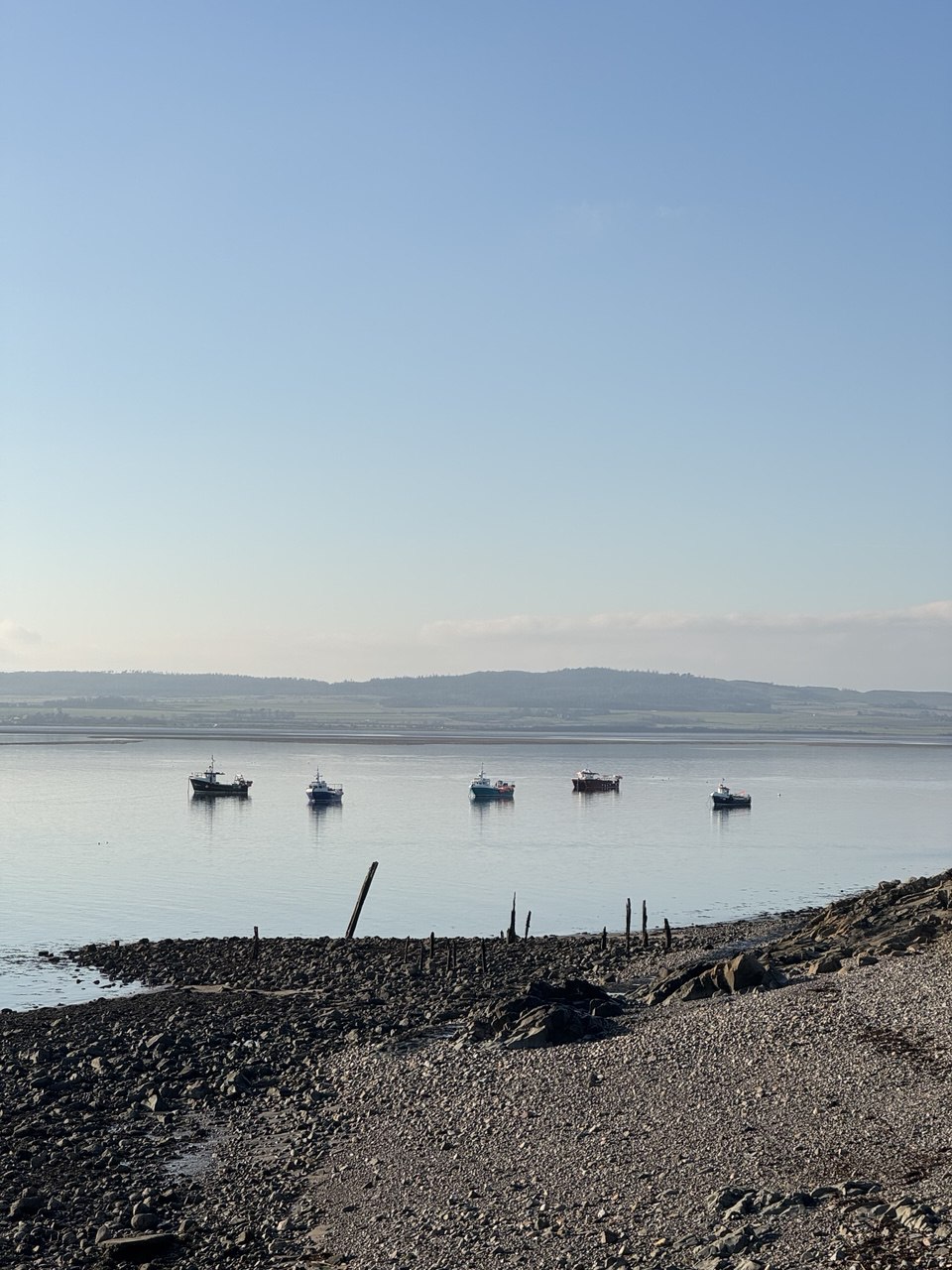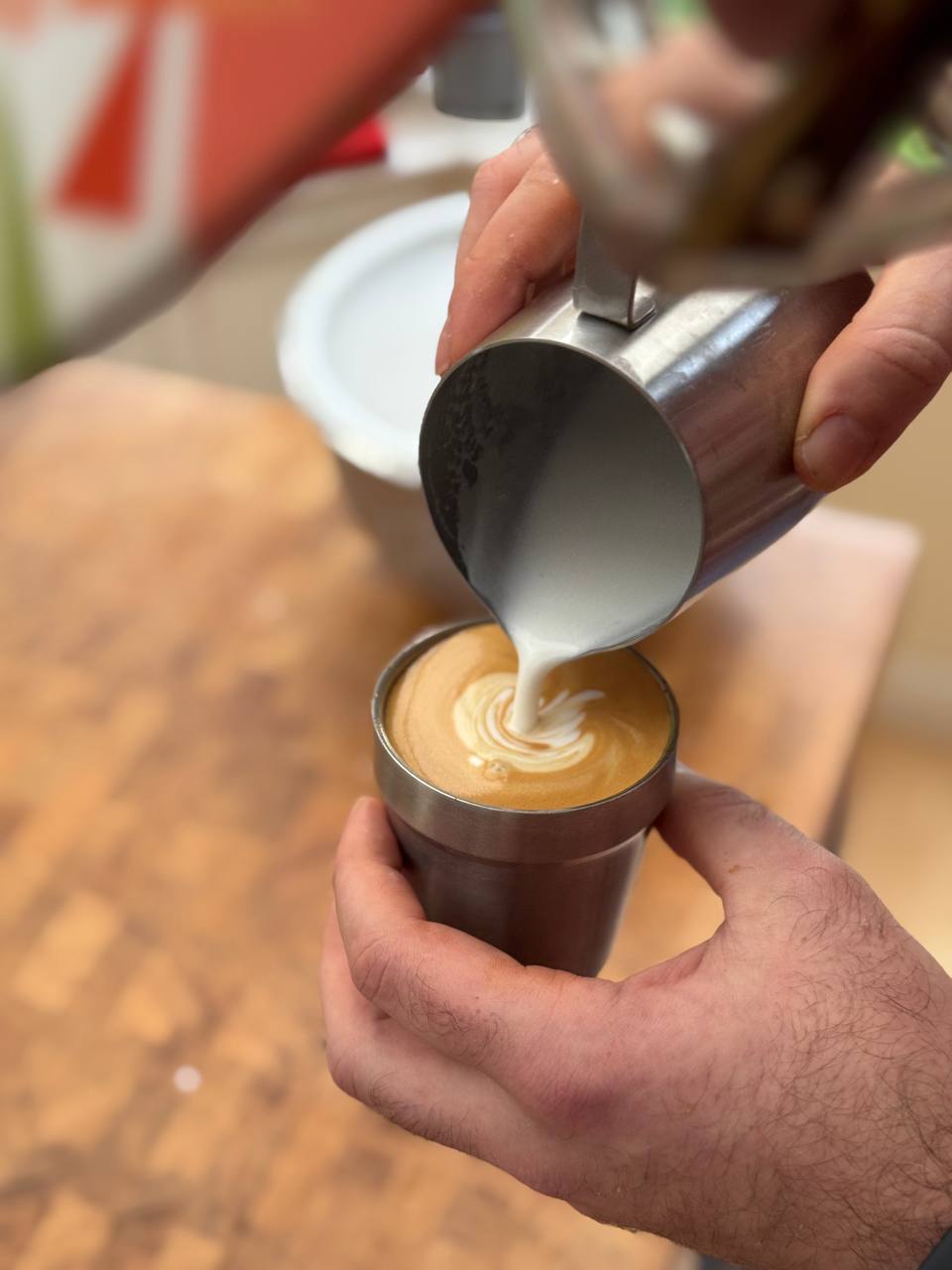|
Your weekly crème de la crème of the Internet is here!
28.11.2023 (read in browser)
This is the free monthly edition of the newsletter. If you want to receive every weekly edition, plus access to the full archive of both free and paid newsletters, subscribe here.
In case you missed it, the last three paid editions included:
-
#173 on simple food, where I throw away some of my aging salami due to wrong mold growth, try canned makgeolli, and question effects of marriage on introverts.
-
#174 on making more cheese, where I make a fresh batch of chevre and provola, reflect on my thoughts on the rotting effect of pointless asks and meetings, and question the real reason behind Holy Ghost holes in cathedrals.
-
#175 on harvesting ferments, where share the results of my two-month long project of making venison salami and Roquefort cheese from scratch, learn about milk trains, and investigate caveats of building an AI startup.
Don't miss out on future newsletters – upgrade now to get access to all of them.
On upcoming winter
It's getting colder on the island and while some lucky folks have already seen falling snowflakes, here in Edinburgh it's mostly altering between bright sun and brisk rain.
That being said, the weather is definitely getting colder, so the food is becoming heartier. Sasha cooked this haggis with whiskey sauce recently and I still don't understand how come it was so hard to find in London: that's the perfect meal for whenever the temperature drops:
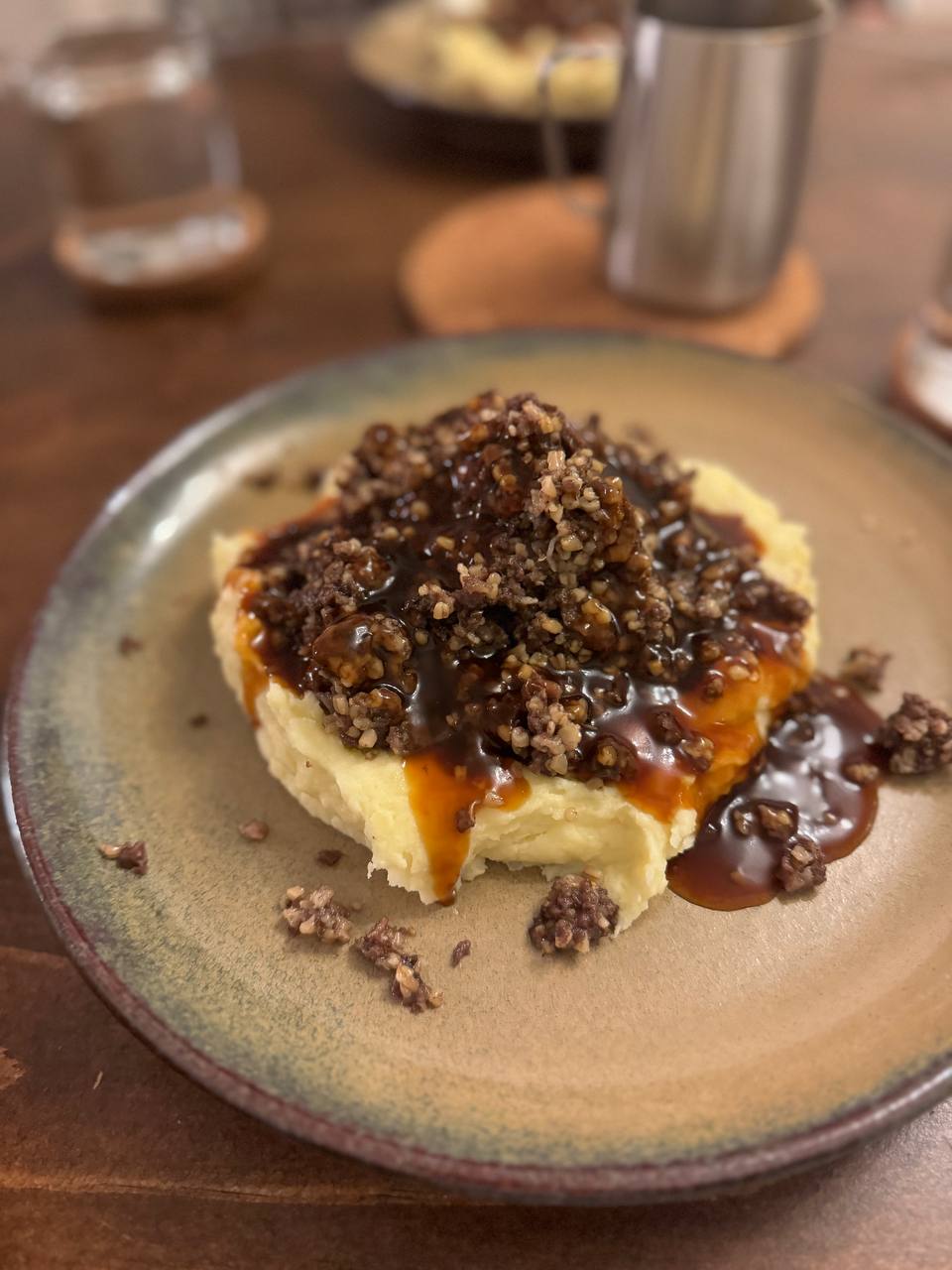
I am not sure if it was always like that, but seems like these days Christmas decorations show up even before Halloween week ends, but at least the Christmas market wasn't set up until the previous week. The atmosphere is very festive indeed, but my favourite part is the street food: there are always new unexpected dishes out there, but the visual showstopper for me was this hot smoked salmon:

The sad part is that given the demand and pretty much no way to easily regulate the heat, the salmon is cooked in 40 minutes so doesn't get enough smoke. It does overcook though. At least it looks nice.
Things I enjoyed reading
I don't remember the last time I was genuinly browsing a book store and looking at the book jackets to make a choice. And it's not really a problem of buying books online: I think it's the problem of choice (as there are too many books to read annotations to), or maybe even a marketing choice (as there are so many ways to influence someone's attention).
I think the last time I actually did that was in my primary school, where I'd stop by a library pretty much daily, to return the books I read, and to find the new ones. To be fair, most of these books were some kind of fiction or sci-fi, but the book jackets back then gave me enough information and not enough spoilers, which was great:
Rarely do I buy a book because I was seduced by the summary on the back or inside flap. As a reader, I don’t find such text all that relevant. I’ll skim it if I’m browsing in a bookstore or on a retail page—just enough to get the general contours. But lately, what used to be passive avoidance has evolved into a deliberate stance: these days, I refuse to read the jacket copy in full unless I absolutely have to. Jacket copy offers neither an effective barometer for predicting what I love nor reliable protection from buying things I regret. It is reductive, misleading, and—I have decided—none of my business.
At the same time when I had to approve the jacket for my own book almost a decade ago I did my best to explain what it is: now I wonder if anyone actually bought it based on the description.
Most of the time, the most stressful part of software development process is not writing code, it's joining meaningless meetings, but sometimes you get kinds of bugs that are very stressful too and this is one of these cases:
There is a circuit that produces a pulse every clock cycle (8 times a second), turning a red light on the ground support instrument rack into a robot heartbeat indicator. The spacecraft power supply went through its familiar progression of voltage steps and currents, but after too much time, the heartbeat remained dark, and the telemetry never came.
I don’t really remember what happened next. Probably something about meetings in the morning to figure out what the hell do we do now?! What I do remember is the feeling of emotional devastation that followed me home where I recounted the story to my wife. I was convinced I would lose my job in the morning and space exploration history would attach my name to a particular chapter of infamy.
I won't spoil you how they managed to recover the Mars rover, but that highlights the importance of many boring parts of the software development lifecycle (and yet doesn't justify the majority of meaningless meetings).
I will probably write a separate series of posts on this topic, but in the last weeks I got deep into setting up the smart home infrastructure. I had various attempts at the topic for years now, but it never went past a few HomeKit-enabled devices up until recently, when I turned a Fire HD10 tablet into a HomeAssistant dashboard and now run a bunch of wonderful things, from aurora forecast to live bus departures.
There is one thing I can't really figure out how to automate, and that is coffee making:
While cutting a channel for the USB cable, I cut right into the water tank. Now if you try and make more than one cup of coffee, the water pours out of the side, really helpfully into the electrics. I learned this for the first time was it flooded my kitchen and poured water on to the floor.
I am probably quite far from soldering a few more parts to my coffee machine, but could easily automate pressing buttons. The big question for the majority of these automations is how to handle water supply though: and also water disposal.
Which reminds me: I have some RPi water pumps lying around, but they're probably not powerful enough and quite slow: it'd have to start pumping water for the morning coffee a few hours before.
I didn't know much about registering ships: just assumed it works the same way as cars, so there must be a registration number. A friend explained the basics to me so I looked up the details and there is way more to it than a mere number:
Most ships have clues to their identity emblazoned on their stern, often in the same order: owner, name, port (or “flag”), and International Maritime Organization (IMO) number. American President Lines (APL) owns this ship, christened the Mexico City, and it sails under the flag of Singapore.
The owner, name, and flag may change over a ship’s lifespan, but the IMO number stays the same as mandated by an international maritime treaty. Like vehicle identification numbers, IMOs help thwart fraud. Do a web search on an IMO number and the ship’s full history pops up.
The interesting part is the fact that you need to specify the port (or "flag"), so essentially you get to choose the "citizenship" of your boat. If only it worked with humans like that too.
I am a big fan of vim but never considered using it for iOS development, even though I briefly tried it mostly to show off at inteviews, but seems like over the last years it became a more or less decent place for some developers:
I started wondering how I could achieve that. First, I wanted to create a few simple commands to build and run applications. I started adding them piece by piece and in no time I ended up developing my plugin to do it all for you! I called it xcodebuild.nvim.
The plugin not only allows you to build and run applications, but it also provides an advanced log parser to generate a simple summary, and many additional actions like switching simulators, uninstalling apps, selecting schemes, etc.
The biggest caveat obviously is that without Xcode you miss out on debugging things, getting access to SwiftUI previews and visual hierarchy, etc but I am pretty sure that there are lots of people who don't use these anyway.
Probably one day this newsletter will be autogenerated based on favourites from my RSS feeds, but we're not there yet and the outputs that I get from any LLMs out there are hardly anywhere close to my style of writing (haha). It's interesting to see other people looking into the same problem though, and the results are quite interesting:
Discovering that machine-generated content has masqueraded as human-made can be unsettling. It’s not just a breach of transparency; it might feel like a betrayal, as though we’ve been deceived and our trust exploited.
Writing serves as a bridge between different human beings, allowing us to empathize, understand, and resonate with each other’s experiences and insights. If this bond is revealed to be with a machine rather than a person, the sense of emotional connection can break. It can lead to disappointment and backlash, like finding out that a virtual girlfriend or boyfriend you’ve been emailing is actually a sophisticated bot. Perhaps this accounts for the disgust when people begin to smell AI-written content.
I guess the biggest problem here is that LLMs tend to agree and elaborate, but it's very hard to make them right provocative essays or good arguments.
While in the modern world there are probably more kinks than the ancients thought of, it's interesting to see how some things are going throughout centuries worth of records and still evolve:
There was no uniform view of masturbation in the ancient world. The Sumerians perceived it as an act of creation: one myth describes the god Enki ejaculating into empty riverbeds and thereby creating the Tigris and Euphrates. Likewise, ancient Egyptians believed that the god Atum created the world by the force of his masturbatory powers. The ancient Greeks regularly depicted scenes of masturbation on vase art, including masturbating women and their (at times multiple) ancient dildos.
I am surprised the biohacking community didn't (yet?) seriously approach the topic to figure out how efficient it actually is on all other performance metrics.
I remember the first time I came across the Gödel’s incompleteness theorems, and even though I was never very interested in applied mathematics, it's safe to say that my life was not the same ever since:
We can convert the last sentence into a precise arithmetical formula that we can write down* using elementary symbols. This formula of course has a Gödel number, which we could calculate by mapping its symbols onto powers of primes.
This example, Nagel and Newman wrote, “exemplifies a very general and deep insight that lies at the heart of Gödel’s discovery: typographical properties of long chains of symbols can be talked about in an indirect but perfectly accurate manner by instead talking about the properties of prime factorizations of large integers.”
What he did was showing the math world that math will never capture all truths, even in basic number theory, and that's kind of a big deal.
This is a pretty cool story about someone deciding to build a plane tracking app for their kid:
Firstly, my scaling logic is backwards — see the tiny plane on the ground at London City Airport. Since the point of the app is locating aircraft in the sky, we need to reverse the scaling. Lower-down planes must show up as larger, since we’re using our eyes to spot them.
Secondly, my toddler does not care about maps, just airplanes. I needed to remove the map if I wanted to clear out the noise and focus on spotting aircraft. And start to build my radar!
But the part that correlates with me most is their screenshot of a graveyard with old projects that never got to get published. I still have dreams to resurrect most of them – maybe one day.
This newsletter is programming-heavy apparently but I had to include this reflection on someone's journey in programming, mainly because it yet again highlights how many different paths might lead to the same thing:
This is not the case in industry though: the problems do evolve for sure, but somehow, the patterns are the same. And when you start a new work, there is a “right way” of doing things. Granted, there are opinions here, but enumerable. Going out of those ways/patterns seemed to always raise a red flag to the person viewing the code.
It took a while to understand that, and with trial-and-error, and lots of good advice and informative discussions, I finally started converging to these patterns, and the first iteration of my code started to look better and better.
It's also great to see that even after so many turns the author has more plans to evolve in the field (outside of their immediate occupation), which is very inspiring.
Things I didn't know last Tuesday
There is some new research confirming the theory on how humans could've built the Great Sphinx of Giza, and seems like the majority of it was naturally formed:
Further experiments provided evidence in support of a longstanding hypothesis that natural processes first created a land formation known as a yardang, after which humans added additional details to create the final statue. Initial results were first presented last year as part of the American Physical Society's Gallery of Fluid Motion, with a full paper being published this week in the journal Physical Review Fluids.

I am pretty sure the pyramids were built differently though.
For a few decades I played only Quake and HoM&M, but didn't expect to see Elon Musk out of all people on the list of fellow players.
Below is a DJWheat interview with Dennis 'Thresh' Fong from three years ago. Fong is an esports pioneer and can fairly be described as the best Quake player of the '90s, most infamously winning John Carmack's Ferrari 328 at a 1997 tournament. This guy is as legitimate as it gets. And around 32 minutes in, Fong says Musk was there.
"Elon Musk, he's known as a huge gamer, we used to play on the same Quake server, almost every day I'd see him on: Zip2 was his username."
Such a shame I joined the arena a few years later.
It's hard to imagine a 14 floor building in the centre of London in the 19th century, but that was the thing:
Hankey further extended the flats in 1874 and 1877 to the south and west. There were objections to the height of the flats, not least from Queen Victoria who could no longer view the Houses of Parliament from Buckingham Palace, but existing legislation did not explicitly prohibit building over 100 feet in height, and thus the authorities could not stop Hankey.

Sadly it was destroyed in the 70s, so now people could probably see the parlaiment again.
Meanwhile, in Scotland people decided to build below the ground instead, and there is a street under the infamous Royal Mile.
Mary King's Close is a historic close located under the Edinburgh City Chambers building on the Royal Mile, in the historic Old Town area of Edinburgh, Scotland. It took its name from one Mary King, a merchant burgess who resided on the Close in the 17th century.
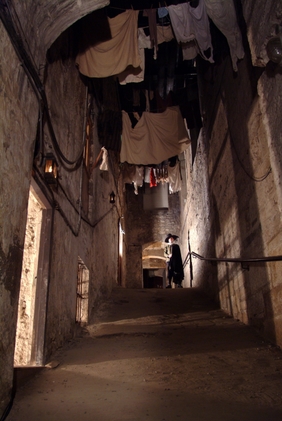
It still operates as a tourist attraction, which is obviously more impressive then a building destroyed fifty years ago.
And speaking of Scotland, there are a few Great Trails in the country, and this one is one of them, totalling 103 km around Perthshire.
It follows old drove roads and ancient tracks across a varied terrain of farmland, forests and moors. Some of these routes follow the same ones used by the Caterans – fearsome cattle thieves who raided Strathardle, Glenshee and Glen Isla from the Middle Ages to the 17th century and for whom the Trail is named.
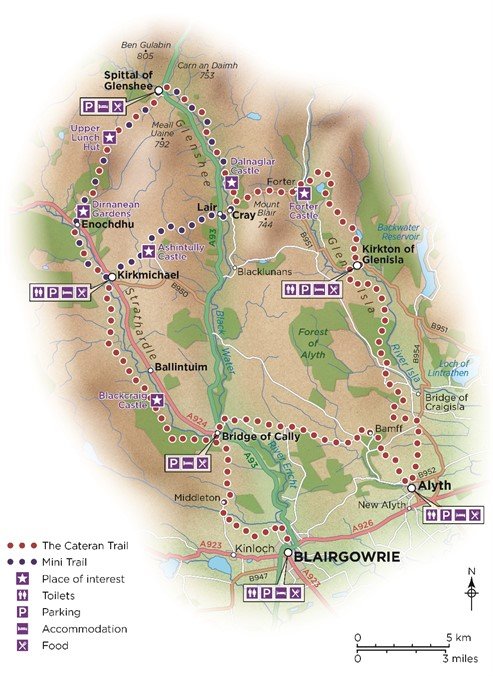
What's fun about this trail is that it's divided into stages which could be comfortably walked in five days, but these stages are circular so there is no official beginning or end: one could stay in the middle and every day cover a different segment instead.
For months now I joke that all good things are banned in the States (think proper butter, black currants, and so on), but this is the country taking back at me:
The boysenberry is a cross between the European raspberry (Rubus idaeus), European blackberry (Rubus fruticosus), American dewberry (Rubus aboriginum), and loganberry (Rubus × loganobaccus).
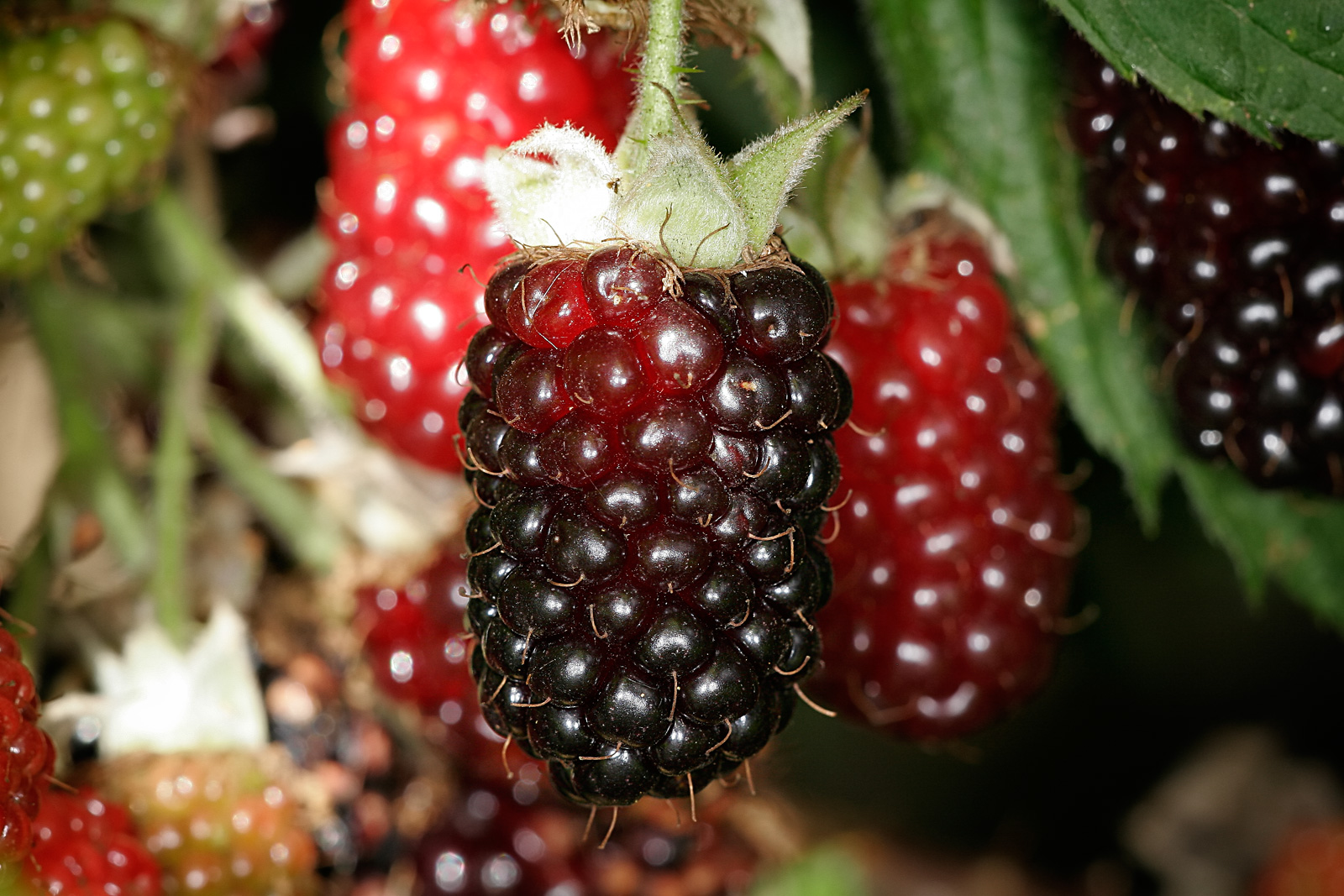
So someone just casually cross bred a bunch of berries and now they're a big deal in Oregon (and also the main ingredient of a local pie):
And as we look into American food, this one I didn't expect:
Spam musubi is a snack and lunch food composed of a slice of grilled Spam sandwiched either in between or on top of a block of rice, wrapped together with nori in the tradition of Japanese onigiri.

I mean, how come it's so popular in Hawaii? It's on the seaside, surely there are better ingredients to make sushi with?
And just to make sure there is more unexpected dishes in the States, here is another regional speciality:
Scrapple, also known by the Pennsylvania Dutch name Pannhaas is traditionally a mush of pork scraps and trimmings combined with cornmeal and wheat flour, often buckwheat flour, and spices.

Which again reminds me, how much more of the US I have to explore when I get the chance to visit again.
Seems like the 19th century was not only the century of skyscrapers in London, but also the time for the first speeding ticket:
Belting past the bobby at a scary 8mph, a motorist by the name of Walter Arnold was about to enter the record books in a burst of exhaust fumes and a flurry of legal activity. Not only was he clearly breaking the speed limit for one of these infernal machines, which was 2mph, but also, and even more damningly, he had no man with a red flag preceding him as the law required.
The bobby on the beat set off in hot pursuit on his regulation issue bicycle, finally catching up with this deranged road racer after five miles.
Ah, the blessed time when a policeman could catch the driver on a regular bicycle.
I didn't know about this annual initiative, but working in the tech industry makes me an advocate for consumerism instead. I love the fact that I can come across a recipe using odd ingredients and have them delivered within hours or days, not months:
Buy Nothing Day is a day of protest against consumerism. In North America, the United Kingdom, Finland and Sweden, Buy Nothing Day is held the day after U.S. Thanksgiving, concurrent with Black Friday; elsewhere, it is held the following day, which is the last Saturday in November.
That being said, I also love cocktails but do abstain from alcohol for a month every year. Maybe I should start doing the same with shopping.
Book of the week
I came across David Chang a plenty of times before and it would be hard not to: his restaurant Momofuku got two Michelin stars in 2009 and retained them ever since until its closure this year, while he also got a number of James Beard Awards and other honors, had a few great cooking shows, and got featured in Chef's table.
I've seen his recipe books before, but had no idea he also wrote memoirs (of course he did), titled Eat A Peach: there is definitely something about David and peaches ("momofoku" means "lucky peach").
Our opening menu at Ssäm Bar owed as much to Korean and Mexican tradition as it did to a late-night takeout habit I’d developed. Whenever I ordered Chinese food to my apartment, I’d be sure to get mushu pork, and then I’d use the pancakes to wrap everything—noodles, rice, stir-fries. Who doesn’t love wrapping food in other food?
The idea of authenticity comes up a lot in the culinary world, both as an ideal and as a criticism. In this conversation, there are usually more questions than answers. What makes something authentic? Is it always better to be authentic? Is authenticity the enemy of innovation? Honestly, having heard these questions asked ad nauseam, I’m bored by the whole topic. Not because it isn’t important. It is. But whenever someone starts talking about authenticity and cultural appropriation, my mind begins to wander. I ask myself, What if my ancestors had traded places and pantries with yours? What would modern Korean food look like if a generation of Changs and Kims and Parks had arrived in Mexico five hundred years ago? What would Mexican food look like? I imagine both cuisines would be even more delicious, and I bet they’d still be wrapping meat and vegetables in tortillas and leaves. We humans are more alike in our tastes than we think. Even with completely different tools and ingredients, we’re bound to arrive at the same conclusions.
I am not a big memoirs fan, but pretty much every single one I read in the past years was really good (Mathew McConaughey’s Greenlights was easily the book of the year for me back in 2021), and most memoirs have a cross-cutting theme (e.g for McConaughey this was the father/son relationship).
For David such theme is growing up in Virginia as the son of Korean parents, and then trying to find his place and acknowledge the roots – which leads to lots of anger and long thorough process of learning how to deal with it.
It's also worth mentioning that many food-related memoirs come with recipes (looking at you, Tucci), but this one is not, and that's a nice thing for a change.
See you in a week!
Thank you for your support and subscribing to the weekly edition.
If you have any questions, or want to suggest a link for the next newsletter, please drop me a message on Twitter or reply to this email.
Cheers! 🍸
|








